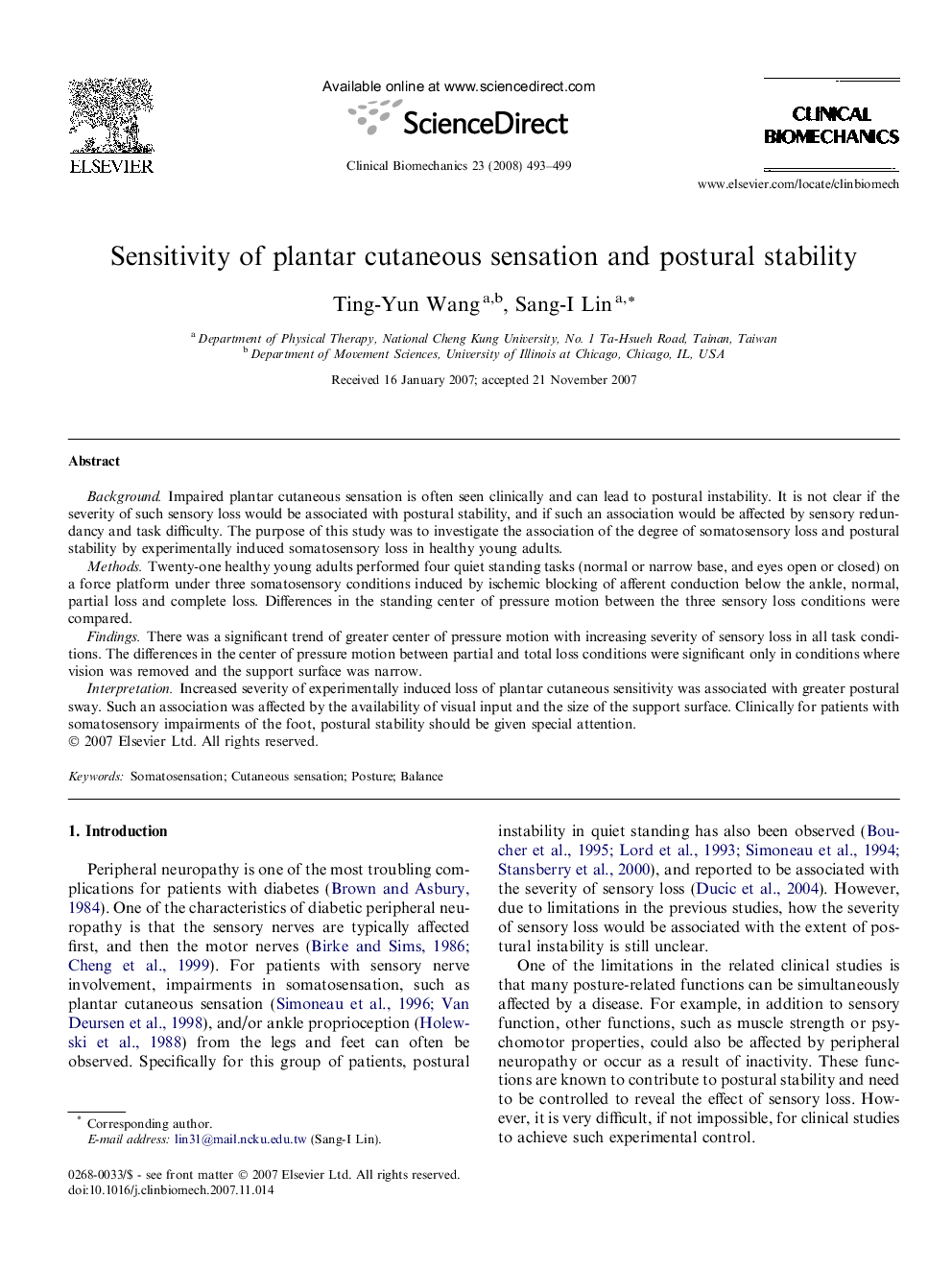| Article ID | Journal | Published Year | Pages | File Type |
|---|---|---|---|---|
| 4051428 | Clinical Biomechanics | 2008 | 7 Pages |
BackgroundImpaired plantar cutaneous sensation is often seen clinically and can lead to postural instability. It is not clear if the severity of such sensory loss would be associated with postural stability, and if such an association would be affected by sensory redundancy and task difficulty. The purpose of this study was to investigate the association of the degree of somatosensory loss and postural stability by experimentally induced somatosensory loss in healthy young adults.MethodsTwenty-one healthy young adults performed four quiet standing tasks (normal or narrow base, and eyes open or closed) on a force platform under three somatosensory conditions induced by ischemic blocking of afferent conduction below the ankle, normal, partial loss and complete loss. Differences in the standing center of pressure motion between the three sensory loss conditions were compared.FindingsThere was a significant trend of greater center of pressure motion with increasing severity of sensory loss in all task conditions. The differences in the center of pressure motion between partial and total loss conditions were significant only in conditions where vision was removed and the support surface was narrow.InterpretationIncreased severity of experimentally induced loss of plantar cutaneous sensitivity was associated with greater postural sway. Such an association was affected by the availability of visual input and the size of the support surface. Clinically for patients with somatosensory impairments of the foot, postural stability should be given special attention.
